Pierre Gagnaire is one of the luminaries of the cooking world. He received his first Michelin star in 1977 and since then his superb cooking skills and artistic talents have been steadily increasing. Today, with seven Michelin stars glowing over his tables, he is still hard at work developing his galaxy of delicious morsels. Gagnaire’s charisma radiates through eleven restaurants in eight countries, from Paris to Tokyo to Las Vegas. His three-Michelin-starred Paris restaurant was ranked third in the world’s 50 greatest restaurants by Restaurant Magazine UK in 2008. At any given moment of any day, somewhere in the world, some lucky guests are savoring his magical creations.
Gagnaire was born in the Loire region in France and grew up absorbing the basics of cooking and service in his parents’ restaurant in the city of Saint-Etienne. “When I was eighteen, I began my apprenticeship that took me to different restaurants to learn the craft of cooking. Of course, that included many things besides actually cooking: I cleaned kitchens, carried heavy sacks of flour and crates of vegetables and learnt each process with honesty and sincerity.”
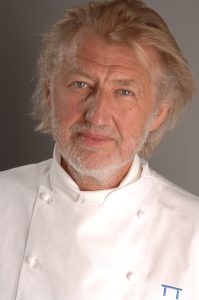 As he ascended through the ranks of the kitchen hierarchy, his idea of the perfect meal became clear. “I became independent in 1977 when I was 27 because I was not happy with French cuisine and service. I found it to be conservative yet not elegant enough. It didn’t have sensibility or emotion. It was always the same. I might not have had the most fantastic cooking technique but I had the most important ingredient for a wonderful meal: emotion. I wanted to serve the perfect soul-food. My idea has been always to give nourishment not only to the stomach but also to the spirit and the mind.”
As he ascended through the ranks of the kitchen hierarchy, his idea of the perfect meal became clear. “I became independent in 1977 when I was 27 because I was not happy with French cuisine and service. I found it to be conservative yet not elegant enough. It didn’t have sensibility or emotion. It was always the same. I might not have had the most fantastic cooking technique but I had the most important ingredient for a wonderful meal: emotion. I wanted to serve the perfect soul-food. My idea has been always to give nourishment not only to the stomach but also to the spirit and the mind.”
Gagnaire’s search led him to Japan where he immediately found the connections he was searching for. “In Japan, food is a philosophy, a way to something, a poem, a garden. Look at Kaiseki cuisine, that’s poetry in its highest form. I’ve been trying to learn that. Actually, that’s what I was feeling all along and was trying to express in some form even before I arrived in Japan. In Tokyo I felt that I was at home in a sense, that my feelings about cooking were reflected and confirmed here. Voila, I found what I was looking for!”
This was in 1984. By that time, Gagnaire had already been working for himself for seven years. “The Japanese love quality and beautiful details just as much as I do, so I love them! Ever since my first trip here, I had a very good relationship with Japan.”
Gagnaire has been back many times and opened his first Tokyo restaurant in 2005. A strong believer in using local produce, he loves visiting markets to hunt for the freshest ingredients. “In Tokyo, I always go to the Tsukiji fishmarket. It’s the most fantastic place, and for a cook it’s like going to heaven!”
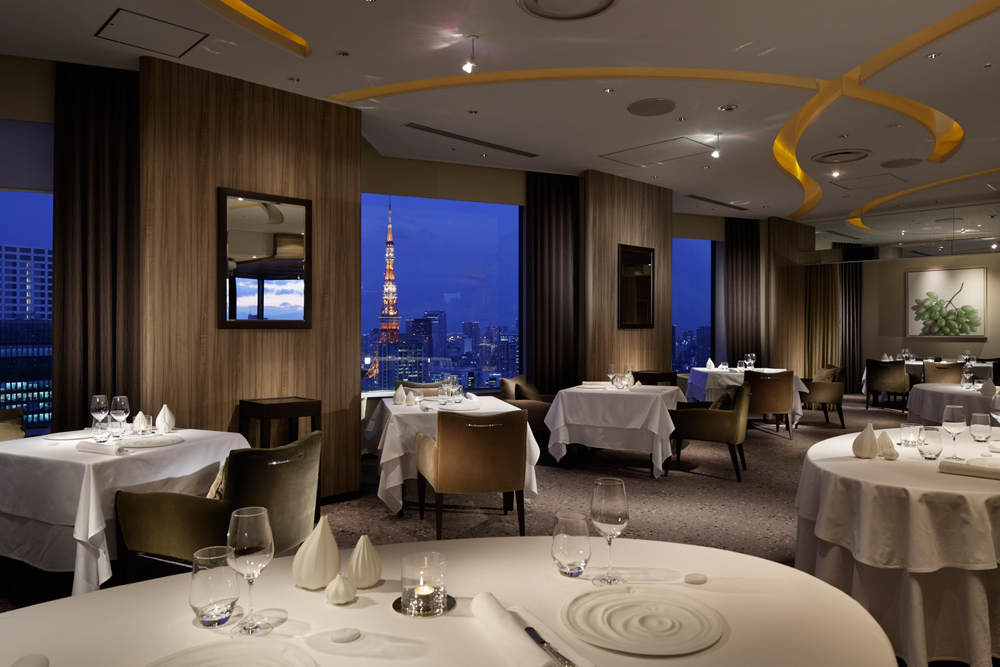
That’s pretty much how guests feel at a Pierre Gagnaire restaurant. In Tokyo, his sanctuary is located on the 36th floor of the ANA InterContinental Hotel. From the darkness of the elevator hall, guests step into light and happiness. Gagnaire has approved every detail of this beautiful interior, filled with comfortable armchairs and bouquets of flowers. The plates were designed by Gagnaire and formed by Sylvie Coquet at Limoges porcelain.
“When you eat with somebody, it’s always a choice. It’s interactive because you have the people and the food and it permits you to have conversations. My job is to create a narrative for them. As guests eat the food, they feel something and they connect to each other through the dishes. Food is a communication tool.”
 Gagnaire is adamant about his desire to nourish people’s souls through their stomachs. “I chose cooking as my form of expression, but my interest is really in the people who enjoy the food. I’m inspired by people who are passionate and full of life. I could say that everything and nothing inspires me. Sometimes I see a produce, smell a perfume, or see a detail in the newspaper that catches my attention. Inspiration is critical because it starts the creative process, but if I want to do something with this feeling, then I must work, work, work.”
Gagnaire is adamant about his desire to nourish people’s souls through their stomachs. “I chose cooking as my form of expression, but my interest is really in the people who enjoy the food. I’m inspired by people who are passionate and full of life. I could say that everything and nothing inspires me. Sometimes I see a produce, smell a perfume, or see a detail in the newspaper that catches my attention. Inspiration is critical because it starts the creative process, but if I want to do something with this feeling, then I must work, work, work.”
At age 60, Gagnaire clocks in eighteen-hour workdays and makes time for jogging a few times a week. “When I’m running, I’m not thinking of anything. My mind gets clear and refreshed. It’s like meditation. That’s why it’s important to exercise six or seven hours a week. Unless I have that private time, I feel nervous.”
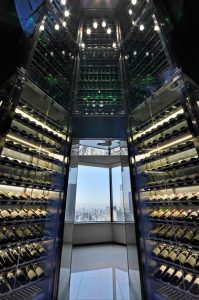 Gagnaire is definitely relaxed and happy in the kitchen with his staff. “Everyone who works with me is my baby, my son or my daughter. I feel responsible for them and I love them as my own children.” In Tokyo, the family atmosphere permeates not just in the kitchen, run by Executive Chef Olivier Chaignon, but also in the dining room, where Gagnaire’s trusted long-time collaborator, Michel Delepine manages the delicate operations.
Gagnaire is definitely relaxed and happy in the kitchen with his staff. “Everyone who works with me is my baby, my son or my daughter. I feel responsible for them and I love them as my own children.” In Tokyo, the family atmosphere permeates not just in the kitchen, run by Executive Chef Olivier Chaignon, but also in the dining room, where Gagnaire’s trusted long-time collaborator, Michel Delepine manages the delicate operations.
Michel is an expert at explaining the fine details of each dish, whether he‘s serving a plate of grilled and marinated scallops with Amontillado, avocado, lime and cucumber gelee, or some beetroot ice cream with grilled eggplant caviar.
Gagnaire is famous for his unique dishes, combining bottom-up home cooking and top-to-bottom cuisine.
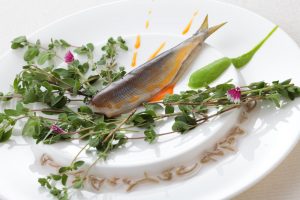 His great love is art, but he is also serious about science, particularly molecular and physical gastronomy. Developed by Hungarian physicist Nicholas Kurti and French physical chemist Herve This, molecular gastronomy examines the physical and chemical processes that occur during cooking. Since Kurti’s death in 1998, professor This continued to develop the discipline and has formed a strong partnership with Gagnaire. “It’s such a pleasure to learn from Herve and to give energy to each other.”
His great love is art, but he is also serious about science, particularly molecular and physical gastronomy. Developed by Hungarian physicist Nicholas Kurti and French physical chemist Herve This, molecular gastronomy examines the physical and chemical processes that occur during cooking. Since Kurti’s death in 1998, professor This continued to develop the discipline and has formed a strong partnership with Gagnaire. “It’s such a pleasure to learn from Herve and to give energy to each other.”
Gagnaire was always famous for his daring juxtapositions of textures and flavors, and his collaboration with Herve This has given him even more fuel to fire up his imagination.
“Herve This is a scientist and he creates formulas and systems where everything fits. I try his formulas with different ingredients. The idea is to mix up things we normally would not think of mixing. Certain fruits with fish, for example. But as we both agree, the most important ingredient is love. Cooking is giving attention and pleasure to people.”
Guests certainly feel the love. Gourmets all over the world make pilgrimages to Pierre Gagnaire’s restaurants. “I’m surprised when I get fans telling me that they love my food and me. I feel happy but surprised. Because I’m just cooking, just working. I’m not a special person. I work for my chefs and guests and family and friends. That’s all. Mine’s a simple story: I offer two or three hours of a dream to our guests. They forget the city where they are and are transported to somewhere magical.”
Gagnaire regularly travels around the world visiting his restaurants. “For me, when I’m working in the kitchen, it’s the same, whether I’m here in Tokyo or in Courchevel. The kitchen’s temperature is the same all year round, but the ingredients change with each location and season. I give scenarios to my young chefs and plenty of freedom of expression. I don’t bombard them with advice. We build a story around each city, for the people in that city.”
True Gagnaire fans might want to fly around the world to taste the master’s work in each of his eleven restaurants, especially when he is in town. At the end of the meal, he is known to stop by every table to greet his guests, very much like restaurateurs used to do in the old days.
“I love seeing the twinkling stars in people’s eyes. I work for this, to feel their happiness. Because at the end of the day, we must answer why we are alive. Why are we here? Why do we meet? It’s destiny. Mine was to realize that I could tell stories with food. That cooking is a way to give tenderness to people. Food is love.”
When Gagnaire talks about love, he is serious. His chefs told me that when his restaurant in Aoyama had to close down, Gagnaire called his young staff’s parents to reassure each and every one that he was going to take care of their children, that all of them would soon be working. “I feel responsible for everyone and everything. If things go well, it’s thanks to my staff, but when something goes wrong I know it is my fault.”
Luckily, things are going very well for Gagnaire and his staff around the world. “The recipe for happiness is to give pleasure to others. That’s all, very simple!” he says. With the recent opening of his restaurants in Seoul and Moscow, the number of happy gourmets around the world is increasing by the minute.
Story by Judit Kawaguchi
From J SELECT Magazine, December 2010
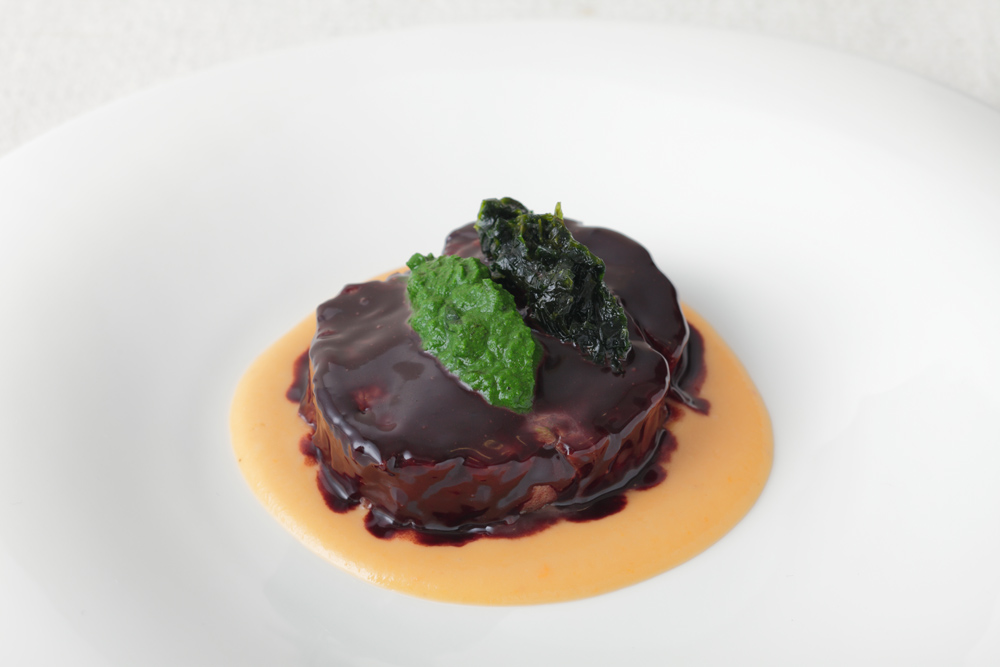

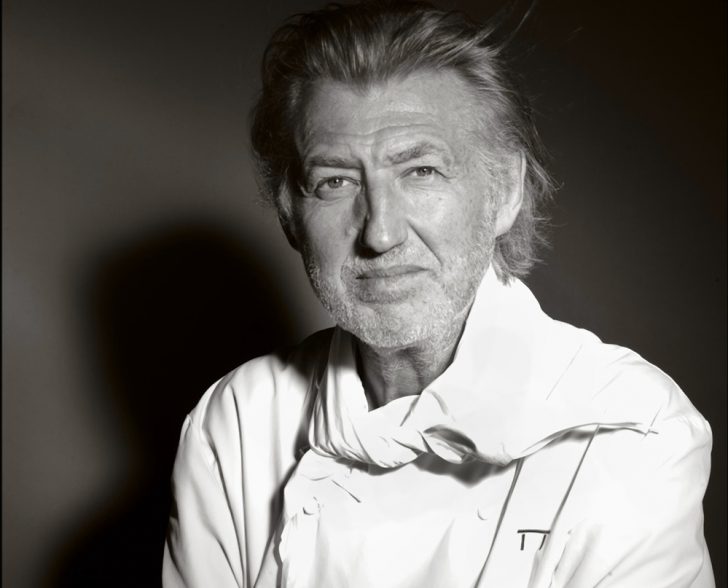


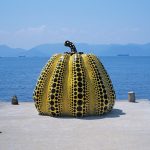

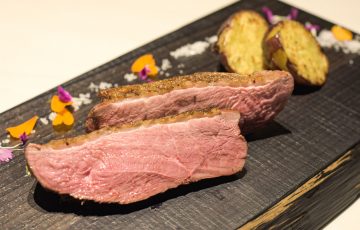
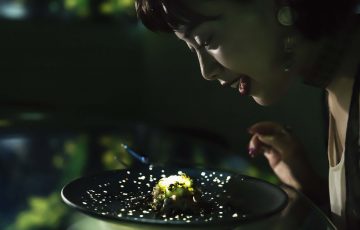
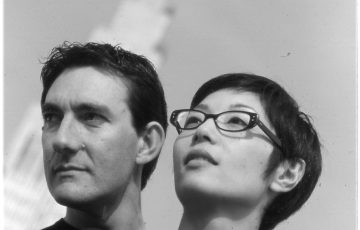

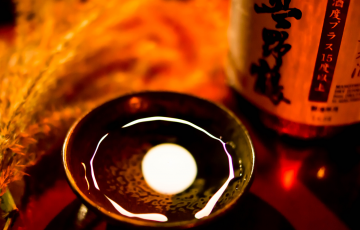
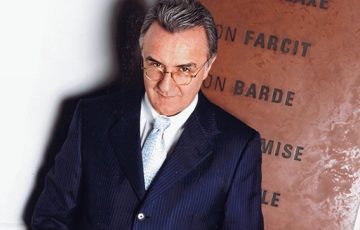



Recent Comments